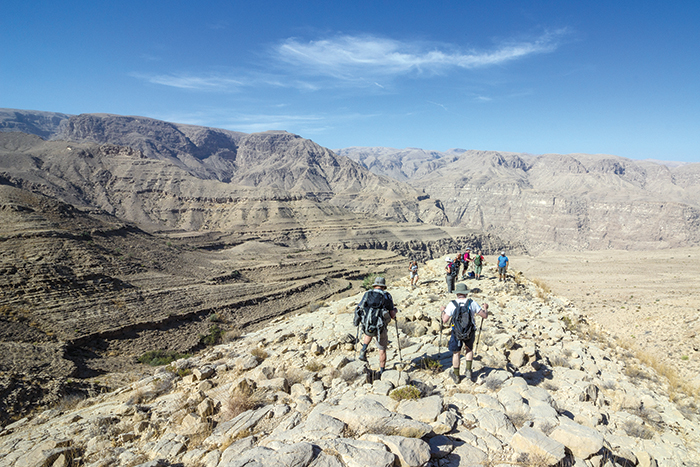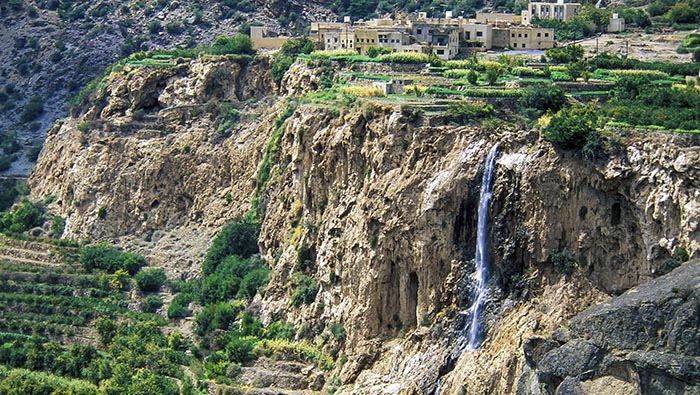

Tourism sector in the Sultanate of Oman is witnessing a remarkable growth through the emergence of a large number of tourism and hotel establishments in the industry, which requires an official presence in such a global event to promote the Omani tourism sector, said Salim Mohammad Al Mahrouqi, Minister of Heritage and Tourism, at Berlin where Oman is currently taking part in the International Tourism Exchange, ITB Berlin 2023.
Known for its rich history and stunning scenery Oman has several attractions that makes it so special. Surrounded by seas and having breathtaking desert and towering peaks, Oman is also known for its rich culture, unique cuisine and art. Here are some not to miss things in Oman.
Visit the UNESCO World Heritage sites
Oman has five sites that have been declared UNESCO World Heritage status. Bahla Fort is the only fort in the country to be on the UNESCO World Heritage list. Other UNESCO World Heritage Sites include the Archeological Sites of Bat, Al Khutm and Al Ayn and the Land of Frankincense as well as the Ancient City of Qalhat.
Bahla Fort was built between the 12thand 15th centuries. According to UNESCO,"Bahla is an outstanding example of a fortified oasis settlement of the medieval Islamic period, exhibiting the water engineering skill of the early inhabitants for agricultural and domestic purposes. The pre-gunpowder style fort with rounded towers and castellated parapets, together with the perimeter wall of stone and mud brick technology demonstrates the status and influence of the ruling elite."
Located around 20 km to the north of the city of Sur, is the Ancient City of Qalhat .“The Ancient City of Qalhat presents a unique testimony to the Kingdom of Hormuz, as it prospered from the 11th to 16th century CE,” UNESCO informed in a statement. “Ancient Qalhat presents exceptional evidence of a major trade hub, which came under the rule of the Princes of Hormuz and profited from its geo-political position in the region.”
The aflaj irrigation systems are the ancient water channels in Oman that date from around 500 AD and use the system of gravity to draw water from underground sources. The archaeological sites of Bat, Al Khutm, and Al Ayn were designated as UNESCO World Heritage Sites in 1988.
The Land of Frankincense – located in the locality of Al Baleed in Salalah – is one of many UNESCO World Heritage Sites located in Oman and was once the centre of the ancient world’s thriving frankincense trade. “UNESCO chose the Al Baleed site, considered by archaeologists as the most important remnants of an Islamic ancient city on the Arabian Sea coast, as being part of the historic home of the frankincense tree the Sultanate of Oman is known for, especially since frankincense was the most important Omani export in ancient times,” said the Ministry of Tourism.
Find frankincense in abundance
Frankincense is an integral part of Oman’s culture and heritage. This aromatic resin is mostly used in incense and perfume and obtained from the tree bark of genus Boswellia. Frankincense is also known for its healing and restorative properties.Locally known as luban, Oman is known to produce the world’s finest frankincense.
The best quality of frankincense is found in the Dhofar region and is abundantly available in the souqs.
See the architectural beauty of Sultan Qaboos Grand Mosque
Sultan Qaboos Grand Mosque is one of the largest mosques in the Sultanate of Oman, and is an architectural and artistic marvel that reflects the beauty of Islamic, Oriental and Omani art. Sultan Qaboos Grand Mosque is characterised by its square shape, in the centre of which is the main dome, which reaches a height of 50 metres, and is bordered by five minarets which represent the five pillars of Islam. The height of the main minaret reaches 91.5 metres, while the height of other minarets reach 45 metres. The iconic carpet and chandelier at the Grand Mosque is a big attraction.
Take a dip at Bimmah sinkhole
With its emerald-green waters and serene surroundings, the sinkhole — which is located some 120km from the Sultanate’s capital of Muscat — draws visitors from across Oman and all over the world. Tourists who get to see the sinkhole and its pristine waters are more than welcome to descend to the bottom through a concrete staircase that has been erected for just this purpose. Tourists are also welcome to take a dip inside the sinkhole, which in Arabic is also called Hawiyat Najm (the falling star), because it resembles a crater that is formed due to the impact of an asteroid on the earth’s surface.
Buy traditional pottery from Bahla
Bahla in Al Dhahirah Governorate is famous for pottery-making and it has been one of the main producers of pottery. Jihal is the most traditional pottery item. It has a pointed shape with a beak and in olden times these were used to store water inside. The clay prevented the water from getting warm and kept it fresh at room temperature.The red khuroos, round and with flat base, were used for dates storage. Their smaller version was used to store dates, syrup or honey.
Sink your teeth in Shuwa
Shuwa is a traditional Omani meat dish cooked in an underground oven during Eid. It makes for a beautiful set of communal traditions where each member has a task. Different families have their own recipes for shuwa.